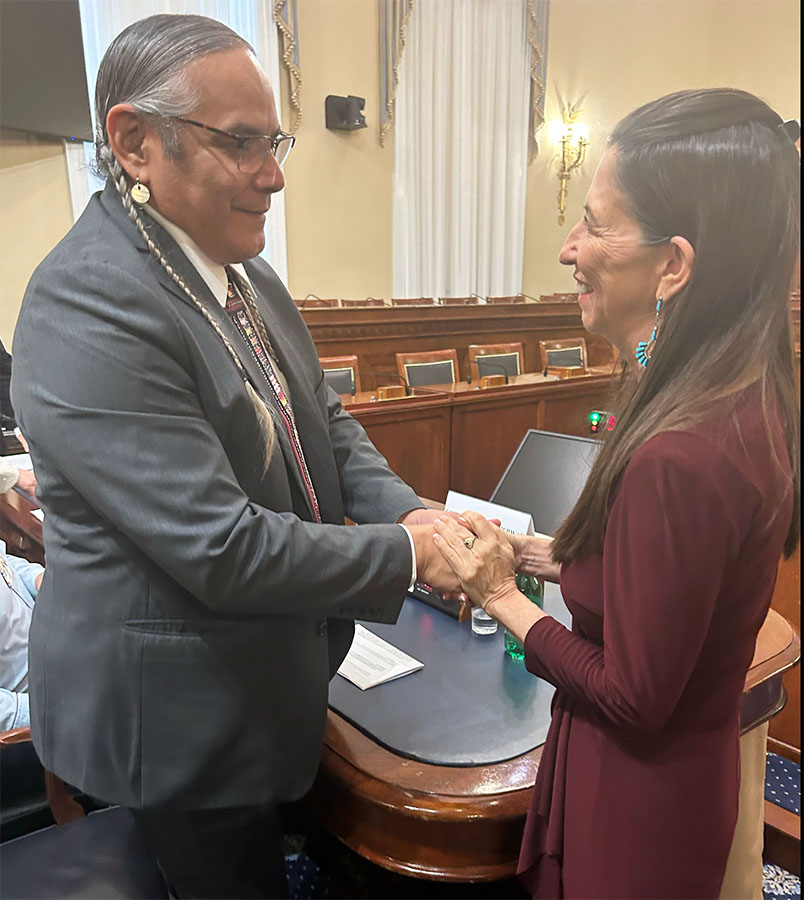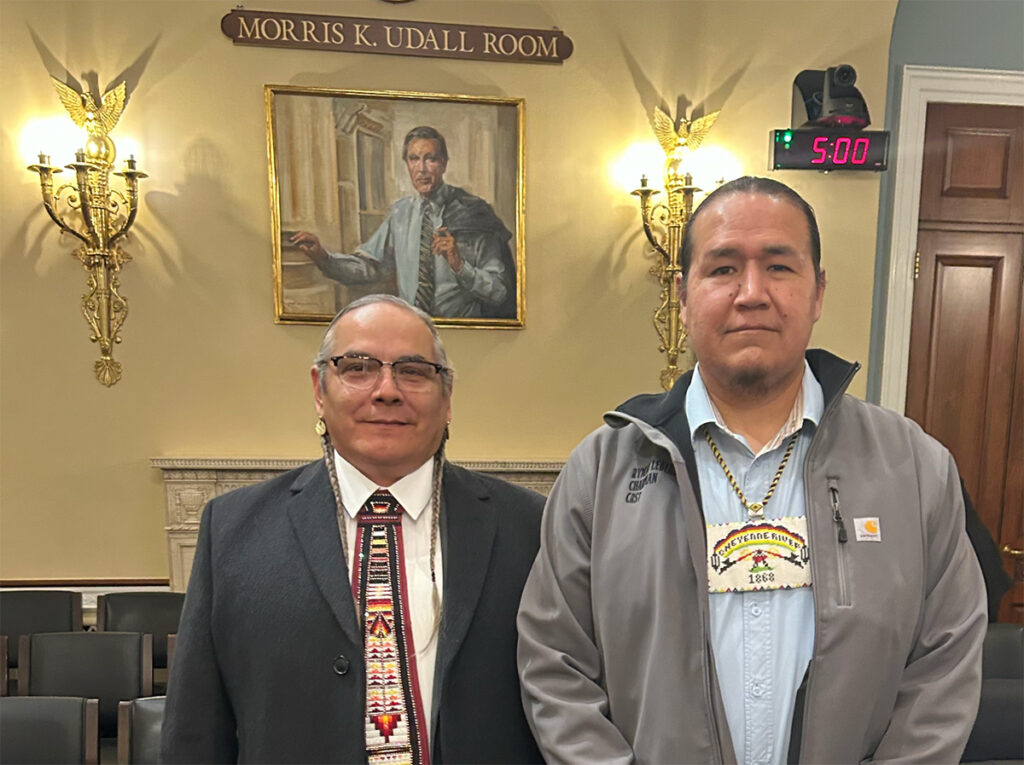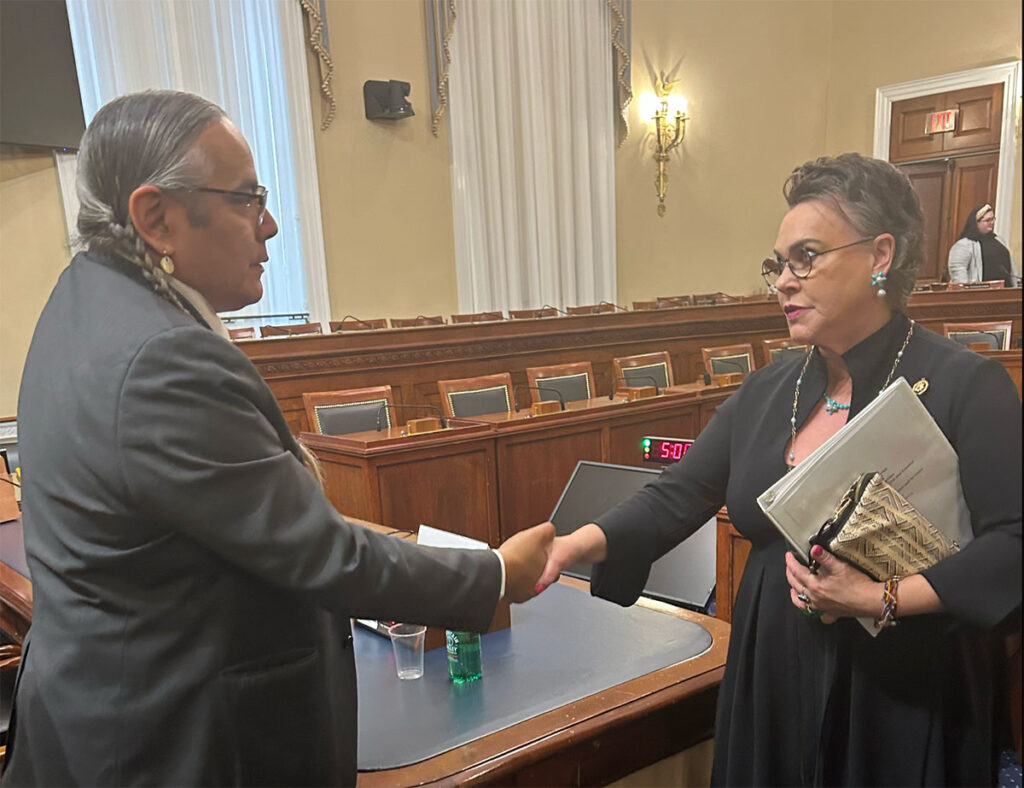COLT Chairman Marvin Weatherwax and Ryman LeBeau, Chairman, Cheyenne River Sioux Tribe testify during subcommittee January 30th, 2024 in Washington D.C.
Examining the Opportunities and Challenges of Land Consolidation in Indian Country
The Subcommittee on Indian and Insular Affairs held an oversight hearing titled “Examining the Opportunities and Challenges of Land Consolidation in Indian Country” on Tuesday, January 30, 2024, at 10:15 a.m. in 1324 Longworth House Office Building.
COLT leaders testified in support of expansion, flexibility and increased funding for Land Buy-Back.
KEY MESSAGES
- Fractionation of Indian land creates significant land management and administration challenges for both tribes and individual Indian owners, resulting in barriers to economic development, land management and use.
- Congress has attempted to reduce fractionation on Indian lands through various probate reforms and the Land Buy-Back Program for Tribal Nations (LBBP).
- While the LBBP’s use of its $1.9 billion fund to voluntarily buy back fractionated interests did show some success, long-term forecasts indicate land fractionation levels will return to pre-LBBP levels by 2038.1
- Congress should consider potential probate reforms, self-sustaining land consolidation funds, and other creative solutions to prevent land fractionation from continuing to prevent economic development in Indian country.



WITNESSES
- Mr. Darryl LaCounte, Director, Bureau of Indian Affairs, U.S. Department of the Interior, Washington, DC
- The Hon. Marvin Weatherwax, Councilmember, Blackfeet Tribal Business Council, Browning, MT
- The Hon. Ryman LeBeau, Chairman, Cheyenne River Sioux Tribe, Eagle Butte, SD
- Mr. Cris Stainbrook, President, Indian Land Tenure Foundation, Little Canada, MN
- The Hon. Victoria Kitcheyan, Chairwoman, Winnebago Tribe of Nebraska, Winnebago NE [Minority witness]
BACKGROUND
Indian land fractionation is the result of land allotment policies implemented by the federal government during the Allotment and Assimilation Era. From 1887 to 1934, the main purpose of federal Indian policy was to assimilate tribes and their members into mainstream American culture.2 The General Allotment Act of 1887,3 also known as the Dawes Act, allowed the federal government to divide up tribal lands into 80- or 160-acre sections and then allotted the lands in fee simple to individual tribal members.4 Tribal lands that were not allotted to tribal members were allowed to be distributed and sold to homesteaders and nontribal members, resulting in about 90 million acres of Indian land being taken out of Indian ownership and control, including lands within reservation boundaries.5
Congress formally ended the policy of allotting tribal lands in 1934 with the Indian Reorganization Act (IRA).6 While the IRA did not return any already allotted lands to tribal ownership, it did include provisions that indefinitely extended certain restrictions on allotments, directed the Secretary of the Interior (Secretary) to restore tribal lands declared as “surplus”, and authorized the Secretary to acquire lands and interests in lands for tribes.7
When the owner of an Indian allotment died, title ownership of the land was divided among all the deceased’s heirs, but the land itself was not physically divided. This resulted in multiple individuals owning a fractionated interest in the same piece of land. As each generation passes, the number of owners who have a fraction of an undivided interest grows exponentially, which leads to the highly fractionated ownership of much of the allotted lands today.

